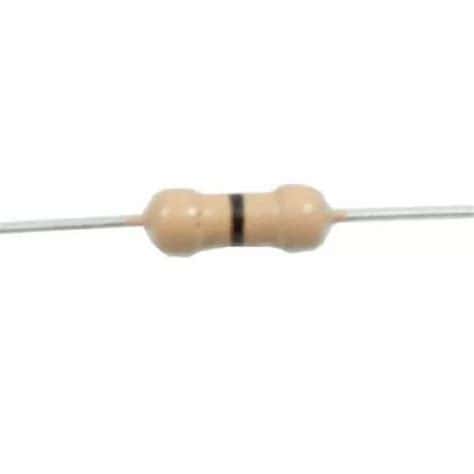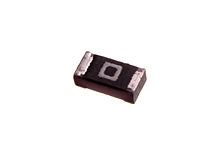Introduction to Zero-Ohm Resistors
A zero-ohm resistor, also known as a jumper resistor or wire link, is a special type of resistor that has a resistance value of practically zero ohms. While it may seem counterintuitive to have a resistor with no resistance, zero-ohm resistors serve essential purposes in electronic circuit design and manufacturing.
What is a Resistor?
Before diving into the specifics of zero-ohm resistors, let’s briefly review what a resistor is. A resistor is a passive electronic component that opposes the flow of electric current in a circuit. The primary function of a resistor is to limit the amount of current flowing through a particular path in the circuit, thereby controlling the voltage drop across the component.
Resistors are characterized by their resistance value, which is measured in ohms (Ω). The resistance value determines how much the resistor impedes the current flow. Common resistor values range from a few ohms to several megohms.
The Concept of Zero Resistance
In an ideal world, a zero-ohm resistor would have absolutely no resistance, allowing electric current to flow through it without any opposition. However, in reality, even a zero-ohm resistor has a small amount of resistance, typically in the range of a few milliohms (mΩ) to a few tens of milliohms.
Despite this small resistance, zero-ohm resistors are designed to have negligible impact on the circuit’s performance and are treated as direct connections or short circuits.
Applications of Zero-Ohm Resistors
Zero-ohm resistors find various applications in electronic circuits. Some of the most common uses include:
1. Jumper Connections
One of the primary applications of zero-ohm resistors is to create jumper connections on printed circuit boards (PCBs). In PCB design, there may be instances where two points need to be connected electrically without using a physical wire or trace. By placing a zero-ohm resistor between these points, designers can establish a connection while maintaining the standard resistor footprint.
Using zero-ohm resistors as jumpers offers several advantages:
- Flexibility: If the circuit design needs to be modified later, the zero-ohm resistor can be easily removed or replaced without altering the PCB layout.
- Manufacturing Consistency: Zero-ohm resistors can be placed using the same automated assembly processes as regular resistors, ensuring consistent manufacturing.
- Visual Indication: The presence of a zero-ohm resistor provides a clear visual indication of the connection, making it easier to identify during troubleshooting or inspection.
2. Configuration Options
Zero-ohm resistors are also used to provide configuration options in electronic circuits. By strategically placing zero-ohm resistors, designers can create different circuit configurations without the need for physical switches or jumpers.
For example, consider a circuit board that supports multiple communication protocols, such as I2C and SPI. By using zero-ohm resistors to select the appropriate connections, the same PCB can be configured for either protocol by simply installing or removing the zero-ohm resistors during assembly.
This approach offers several benefits:
- Cost Reduction: Using zero-ohm resistors eliminates the need for additional switches or jumpers, reducing component costs.
- Space Saving: Zero-ohm resistors occupy minimal PCB space compared to physical switches or jumpers.
- Automated Configuration: The configuration can be easily automated during the PCB assembly process, reducing manual intervention and potential human errors.
3. Current Sensing
Zero-ohm resistors can be used in current sensing applications. By placing a zero-ohm resistor in series with the load, designers can measure the voltage drop across the resistor to determine the current flowing through the circuit.
The voltage drop across a zero-ohm resistor is negligible, ensuring that it does not significantly affect the circuit’s performance. However, the small resistance of the zero-ohm resistor allows for accurate current measurements using sensitive amplifiers or analog-to-digital converters (ADCs).
This technique is commonly used in power monitoring systems, battery management systems, and overcurrent protection circuits.
4. Impedance Matching
In high-frequency circuits, such as radio frequency (RF) and microwave designs, impedance matching is crucial to ensure efficient power transfer and minimize signal reflections. Zero-ohm resistors can be used as part of impedance matching networks to fine-tune the circuit’s impedance.
By strategically placing zero-ohm resistors in series or parallel with other components, designers can adjust the overall impedance of the network to match the desired value. This helps optimize signal integrity and reduce power losses in the system.
5. Prototyping and Debugging
During the prototyping and debugging stages of electronic circuit development, zero-ohm resistors can be incredibly useful. They allow designers to temporarily connect or disconnect certain parts of the circuit without modifying the PCB layout.
For example, if a designer suspects that a particular component is causing issues, they can replace it with a zero-ohm resistor to bypass the component and isolate the problem. This enables quick and efficient troubleshooting, saving time and effort in the debugging process.

Selecting the Right Zero-Ohm Resistor
When choosing a zero-ohm resistor for a specific application, several factors should be considered:
1. Package Size
Zero-ohm resistors are available in various package sizes, such as 0402, 0603, 0805, and 1206. The choice of package size depends on the PCB layout constraints, component density, and manufacturing capabilities. Smaller packages offer space savings but may require more precise assembly processes.
2. Power Rating
Although zero-ohm resistors have negligible resistance, they still have a power rating that determines the maximum amount of current they can handle without overheating or failing. The power rating is typically specified in watts (W) and should be selected based on the expected current flow in the circuit.
3. Temperature Coefficient
The temperature coefficient of a zero-ohm resistor indicates how its resistance changes with temperature variations. In most applications, the temperature coefficient is not a critical factor, as the resistance is already close to zero. However, in high-precision or temperature-sensitive circuits, it may be necessary to consider resistors with low temperature coefficients to minimize any potential impact on performance.
4. Tolerance
Zero-ohm resistors have a tolerance value that specifies the allowable deviation from the nominal resistance value. While the actual resistance is close to zero, the tolerance ensures that the resistor falls within a certain range. Common tolerance values for zero-ohm resistors are ±1%, ±5%, and ±10%. Tighter tolerances may be required in critical applications where even small variations can affect circuit performance.

Frequently Asked Questions (FAQ)
1. Can a zero-ohm resistor be replaced with a regular wire?
While a zero-ohm resistor functions similarly to a wire, replacing it with a regular wire is not always recommended. Zero-ohm resistors are designed to maintain consistent manufacturing processes and provide a standard footprint on the PCB. Using a wire instead may introduce variations in the connection and make the circuit more susceptible to mechanical stress or vibrations.
2. Are zero-ohm resistors polarized?
No, zero-ohm resistors are non-polarized components. They can be installed in either direction on the PCB without affecting their functionality.
3. Can zero-ohm resistors be used in high-voltage applications?
Zero-ohm resistors are not specifically designed for high-voltage applications. In such cases, it is essential to consider the voltage rating and the required clearance distances on the PCB. It may be more appropriate to use dedicated high-voltage jumpers or connections designed for the specific voltage levels.
4. How do zero-ohm resistors differ from jumper wires?
Zero-ohm resistors offer several advantages over jumper wires:
- Consistency: Zero-ohm resistors provide a standardized footprint and can be placed using automated assembly processes, ensuring consistent manufacturing.
- Reliability: Zero-ohm resistors are less susceptible to mechanical stress and vibrations compared to jumper wires, which can become loose or disconnected over time.
- Visual Indication: The presence of a zero-ohm resistor on the PCB provides a clear visual indication of the connection, making it easier to identify and troubleshoot.
5. Can zero-ohm resistors be used in high-frequency applications?
Yes, zero-ohm resistors can be used in high-frequency applications, such as RF and microwave circuits. However, it is important to consider the Parasitic Inductance and capacitance associated with the resistor package. In some cases, it may be necessary to use specialized zero-ohm resistors designed for high-frequency performance, such as those with low parasitic effects or optimized package geometries.

Conclusion
Zero-ohm resistors, despite their seemingly contradictory name, play a crucial role in electronic circuit design and manufacturing. They offer a versatile solution for creating jumper connections, providing configuration options, enabling current sensing, facilitating impedance matching, and aiding in prototyping and debugging.
By understanding the applications and selection criteria for zero-ohm resistors, designers can leverage their benefits to create more flexible, reliable, and efficient electronic circuits. Whether it’s in PCB layout, automated assembly, or circuit troubleshooting, zero-ohm resistors prove to be a valuable tool in the electronics engineer’s toolkit.
As technology advances and electronic systems become more complex, the use of zero-ohm resistors is likely to continue evolving. With their ability to simplify circuit design, reduce component costs, and enhance manufacturing processes, zero-ohm resistors will undoubtedly remain an essential component in the ever-expanding world of electronics.

No responses yet